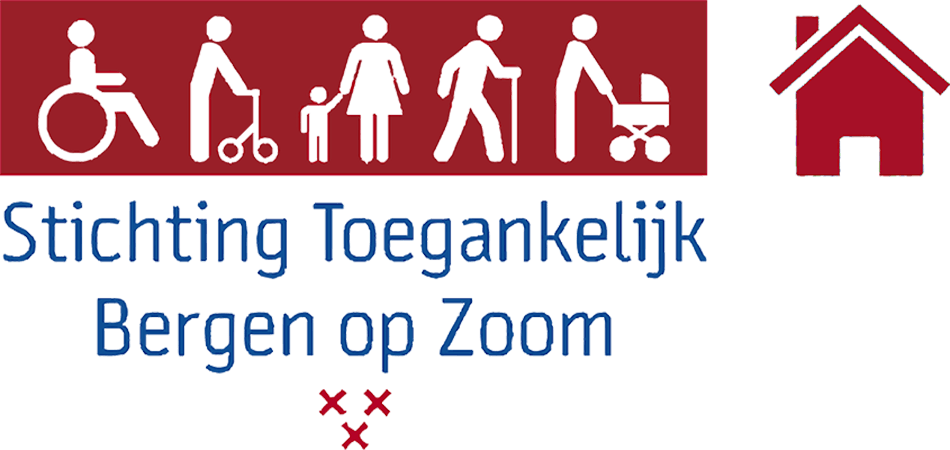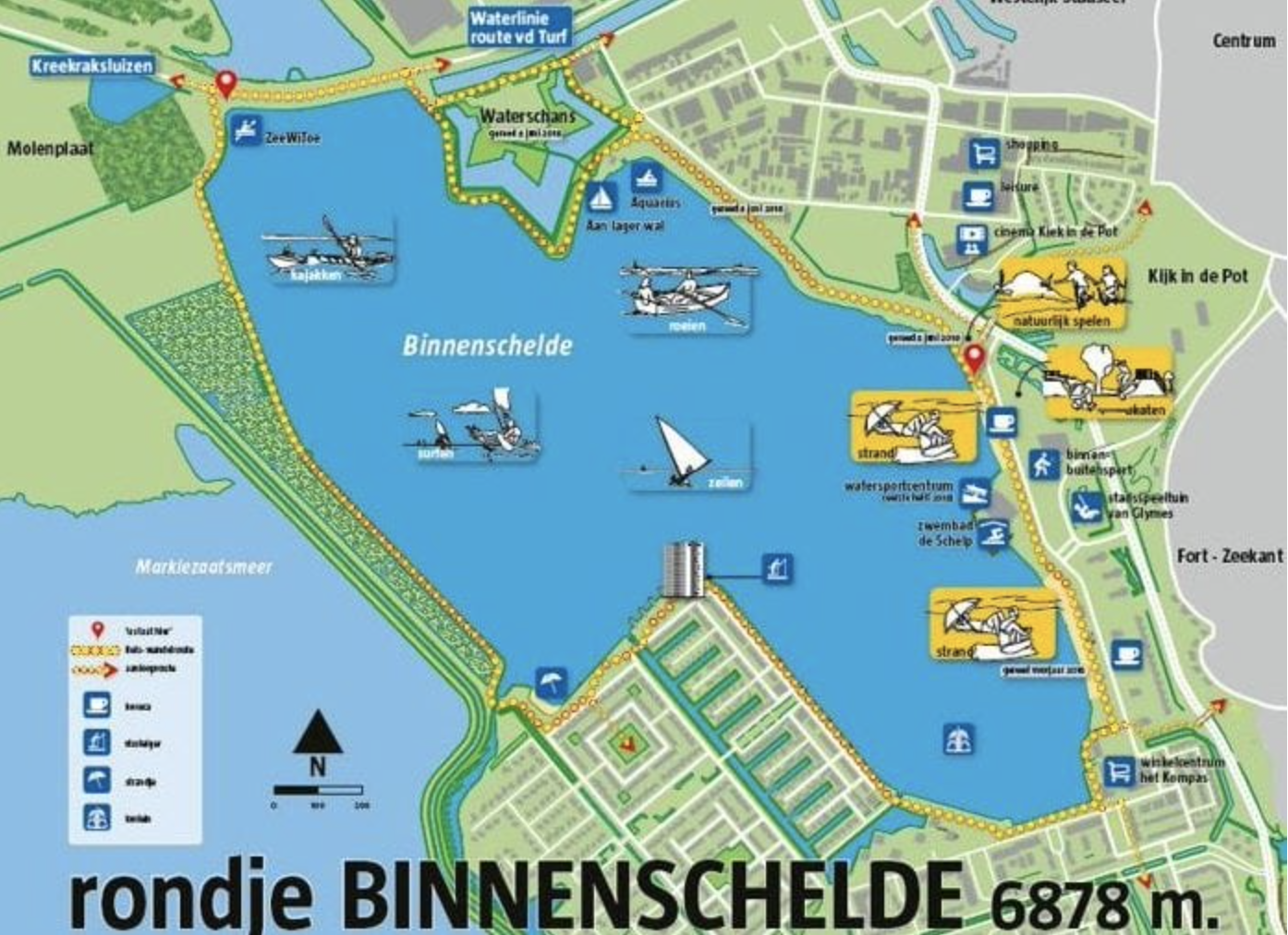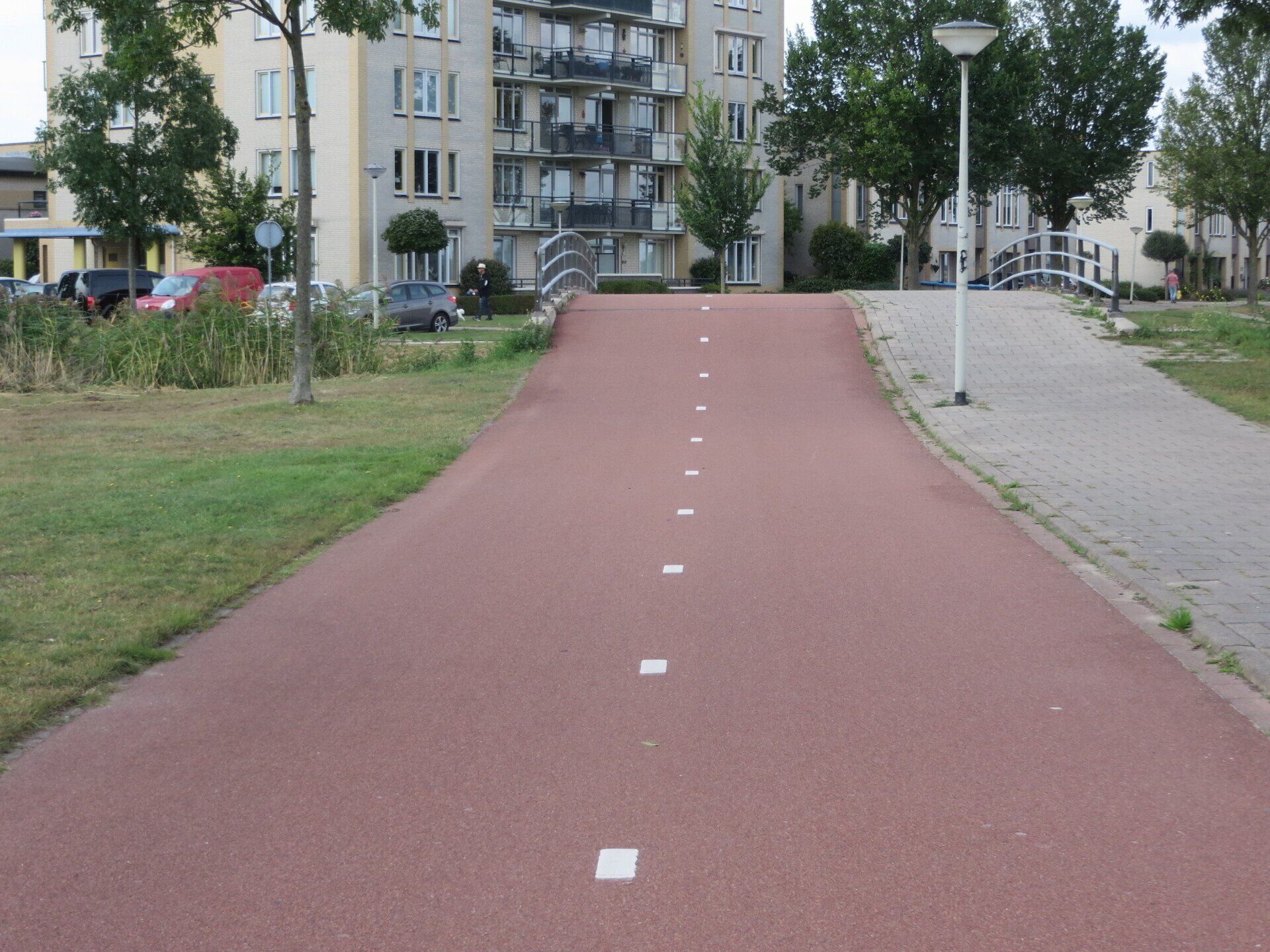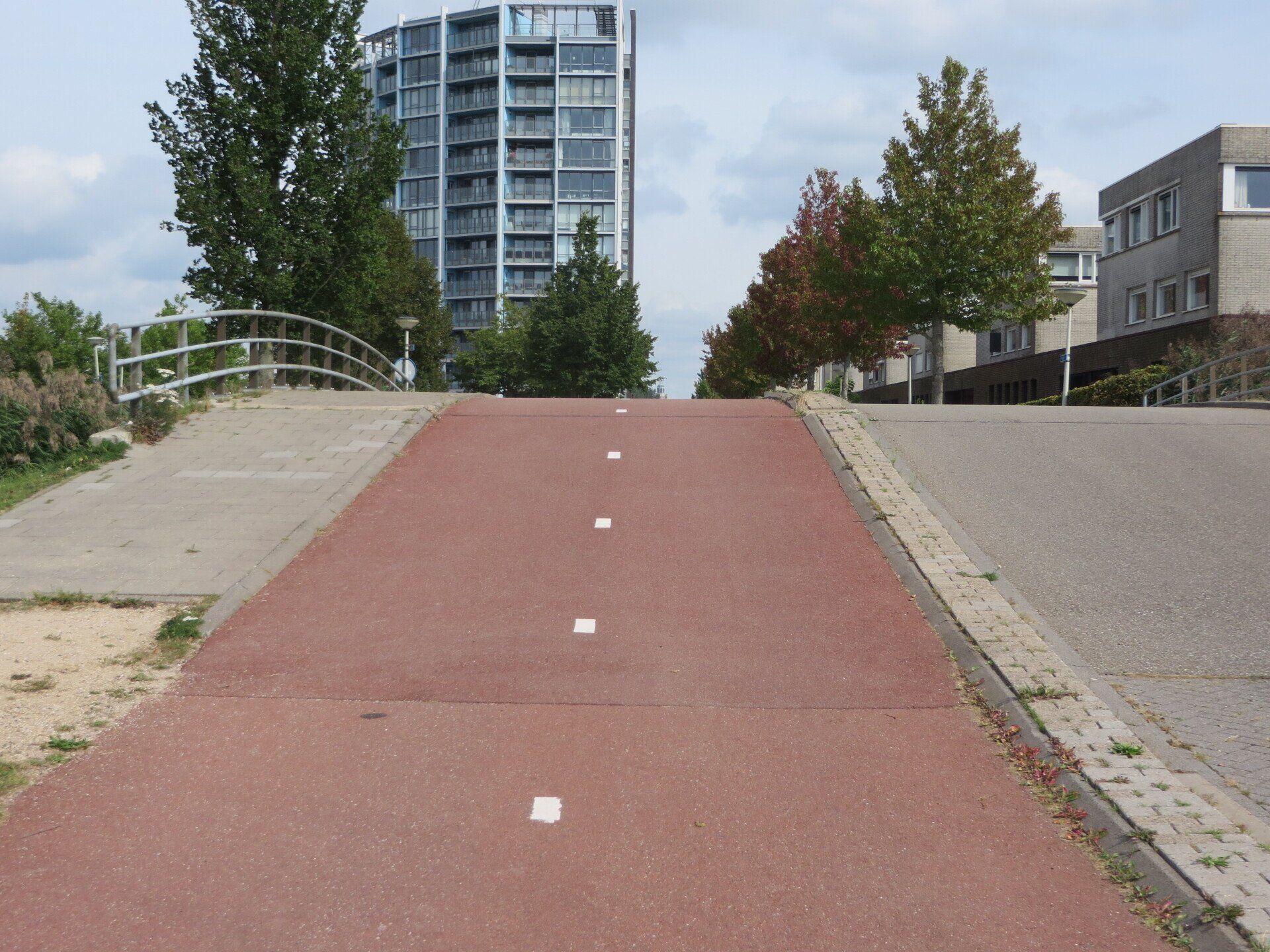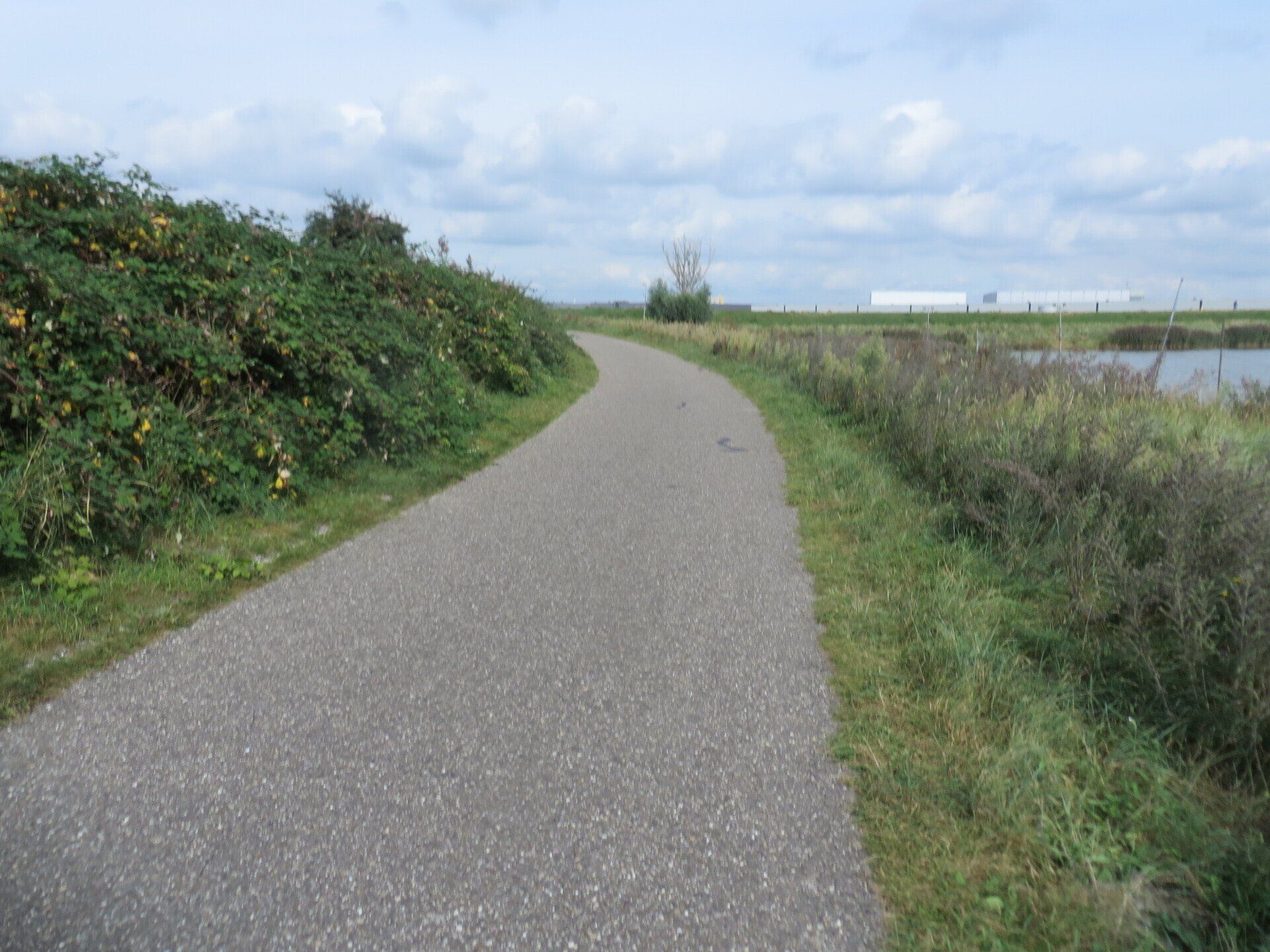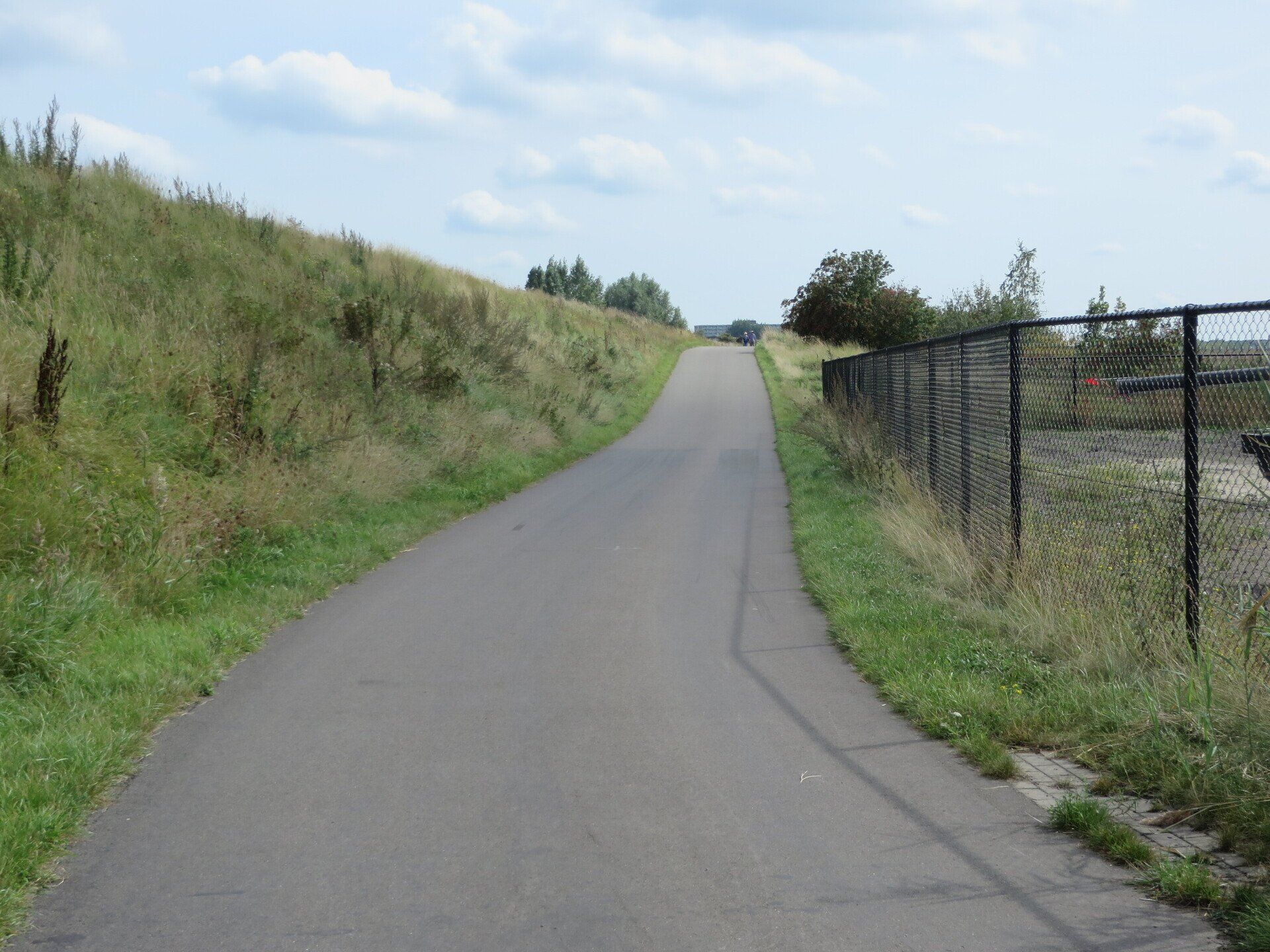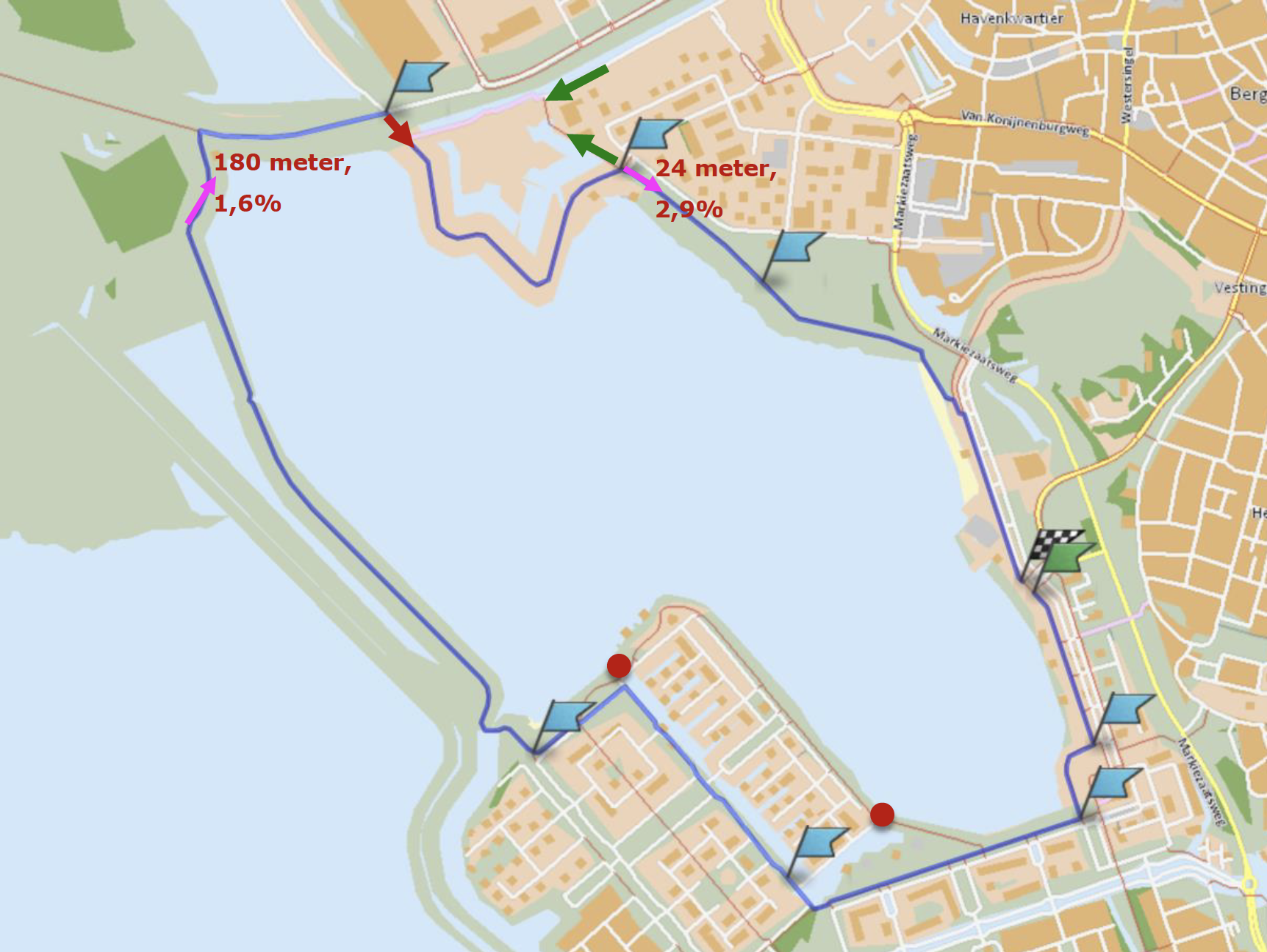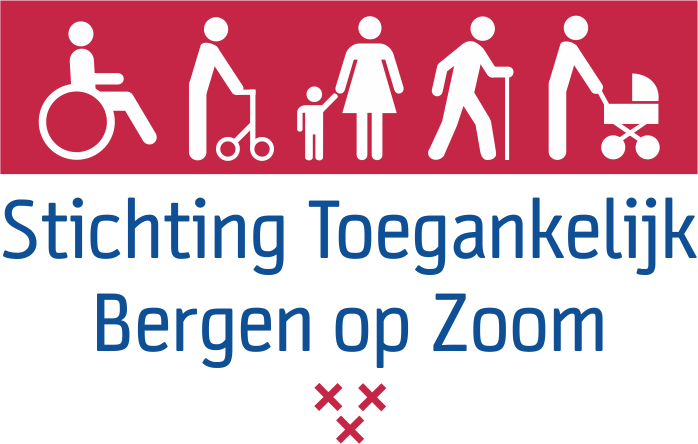Rondje Binnenschelde also for wheelchair users?
Introduction
In response to a question about the accessibility of the Waterschans for wheelchair users, it was investigated to what extent the Binnenschelde tour, praised by many cyclists, runners and walkers, is feasible for wheelchair users.
Provided that a considerable effort has to be made to cover approximately 7 km with a hand-driven wheelchair, the question is whether the height differences can be bridged.
Slopes
The regular round has some steep slopes. These are the bridges over the Spelevaartplas at the Paviljoentjalk and over the Schippersvliet at Klipper (see red dots in the picture). These are short slopes (about 6 metres) of 8% and 11.8% respectively. In addition, there is the slope from the Waterschans to the Noordlandseweg. The length is 40 meters, the percentage is 7.8%. There is also a long slope from the Plaatkade to the Noordlandseweg (at canoe club Zeewitoe). The length is 180 meters, the percentage is 1.6%. Finally, along the Geertruidadijk at 'Aan Lager Wal' there is a slope with a length of 24 meters and a percentage of 2.9%.
Considerations
The effort for the alternative round of the Binnenschelde remains considerable for users of a hand bike or a hand-driven wheelchair without electrical assistance. It is doable with a hand bike with electrical assistance and a hand-driven wheelchair with e-motion hoop support.
Access to the Water Jump
With a vehicle without electrical assistance, access there and back via the Noordlandseweg is not possible. It is possible via the Havendijk. Another option is the path from the Geertruidadijk (access from the Callandweg at 'Aan Lager Wal') towards the Havendijk. See the green arrows in the picture.
Reflection: wheelchair users living on the Bergse Plaat
For a resident of the Bergse Plaat who uses a hand-driven wheelchair without electrical assistance, it is not possible to reach the city center independently with such a vehicle. In fact, electrical support is necessary. Not only to be able to climb slopes, but also to be able to control the speed when descending. Due to its location on the Brabantse Wal, this is an extra point of attention for the municipality of Bergen op Zoom. The question is whether the municipality will provide additional support to encourage mobility to pay for electrically assisted means of transport. For example, how is this arranged in other municipalities with differences in height?
Appendix: Consideration from the slope survey
In the slope study, an effort score is used that is an indication of the difficulty of a slope. The effort score of the slope at Zeewitoe is 14.4. That score is given an indication of 'heavy' in the memorandum. The slope at 'Aan Lager Wal' has an effort score of 6.3. That is labeled as 'still acceptable'. According to the formula and the interpretation from the slope survey, the bridge slope at Klipper is too heavy. The slope at the Waterschans to the Noordlandseweg has an effort score of 76. That is much, much too heavy for a hand-powered wheelchair without electrical assistance. When it comes to safety when descending this slope, the speed without brakes and without 'accelerating' increases to 28 km/h. The wheelchair operator must have sufficient hand strength to brake on the handrims in order to achieve a safe cruising speed of approximately 8 km/h. The sufficiently wide, long and straight run-out path makes it acceptable if the wheelchair driver can keep the speed under control.


